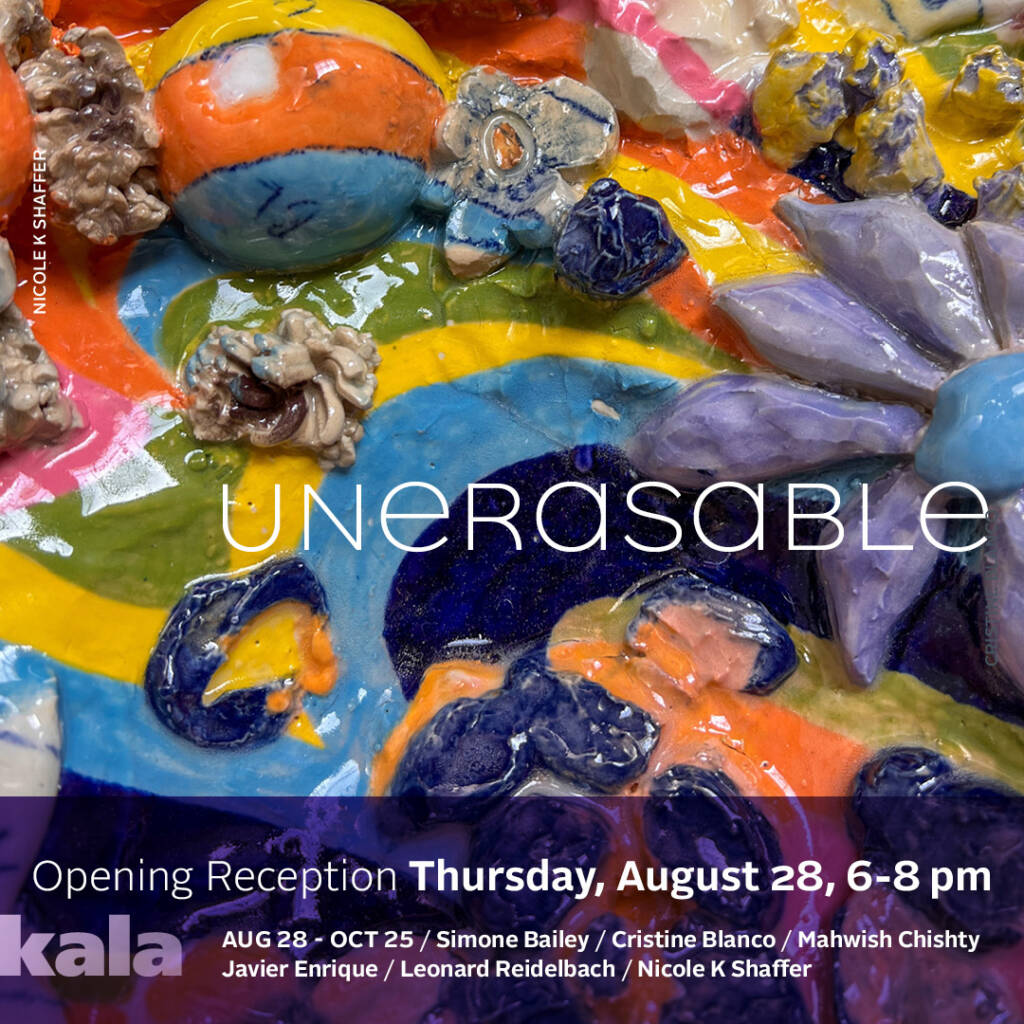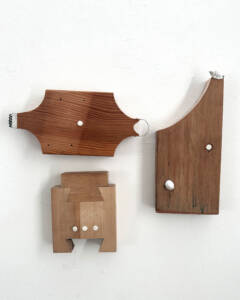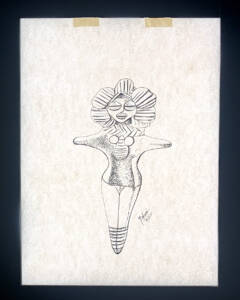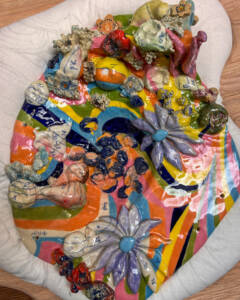Unerasable
Kala Gallery is excited to present the exhibition Unerasable featuring new works by 2024-2025 Kala Fellowship artists: Simone Bailey, Cristine Blanco, Mahwish Chishty, Javier Enrique, Leonard Reidelbach, and Nicole K Shaffer.
Unerasable explores the themes of labor and care, witnessing and observing, visibility and invisibility. The work often questions what remains with us through generations and past experiences and what is erased over time? Using interdisciplinary and experimental approaches, the exhibition’s artists reimagine the framework of dominant narratives and representation. Centering bodily experiences, their work reanimates suppressed histories and stories through personal, political, and poetic lenses.
Simone Bailey presents her sculptural installation as an exploration of material beauty, presence, and abstraction. Working across sculpture, performance, site-specific installation, and video, Simone’s interdisciplinary practice examines disembodied poetics. Her work lingers in the space between the tangible and the ephemeral, engaging with themes of perception, process, desire, and the limits of representation. Through her careful treatment of form and gesture, Simone’s work explores surrogate bodies, acts of violence, and the elusive nature of the “impossible,” while remaining intimately attuned to the complexities of blackness as both lived experience and aesthetic framework.
Cristine Blanco’s sculptural work draws from the physical demands of the body and the land—both seen as finite resources. Her installation explores the rituals embedded in labor, caretaking, and material reuse. Centered around a traditional coconut-shredding stool shared across cultures, Cristine’s work highlights the meditative, repetitive act of scraping as a metaphor for resilience, survival, and devotion. Created in collaboration with her father using reclaimed wood and traditional woodworking techniques, each piece in the installation honors ancestral knowledge, domestic labor, and the quiet rituals that sustain and connect us.
Mahwish Chishty explores borders as dynamic, multifaceted constructs that shape identity, history, and cultural hybridity, particularly within the context of colonization and ancestral displacement. Drawing on personal connections to the Partition of India, Mahwish engages with “border cultures” to examine themes of belonging, memory, and erasure. Expanding on The Sindhu Project, her current project investigates the representation of the ancient Harappan civilization in global museums, reframing institutional narratives through personal and familial perspectives. A collaborative drawing exchange with her sister in the UK becomes both a creative and political act, resisting the static display of cultural artifacts and reanimating ancestral memory.
Javier Enrique presents his project Spectator exploring the quiet power of observation. Through his lens, Javier becomes the unseen witness, capturing fragments of life in fleeting, intimate glimpses. These scenes are steeped in stillness and mystery, inviting viewers to pause and uncover the unspoken narratives that emerge in the margins of everyday life. By embracing the role of quiet observer, Javier documents the beauty of life as it unfolds naturally, without interference. Each image invites viewers into the shadows, to feel the tension of seeing without being seen, and to reflect on the delicate interplay between presence and absence, connection and solitude.
Leonard Reidelbach’s work —comprising serigraphs and architectural sculptures—constructs a nonlinear narrative that explores the dynamics between observer and subject, drawing parallels between decoy ducks and propaganda in the context of rising global fascism. Leonard investigates themes of surveillance, visibility, performance, and safety in numbers, while examining the historical legacies of luxury built on violence and the evolving narratives of trans resilience. By requiring active viewer participation, the work challenges media-driven narratives that erase nuance and humanity, suggesting that complicating visibility through printmaking can foster new ways of seeing, relating, and reclaiming autonomy—not just for trans individuals, but for all of us navigating a shifting landscape of privacy, information, and truth.
Nicole K Shaffer’s ongoing series, Furniture for Hospital Orchards, reimagines a world of rest, healing, and pleasure for queer, trans, mad, disabled, and immigrant individuals who were institutionalized in California State psychiatric hospitals—sites of forced sterilization from 1909 to 1979. Drawing from personal family history and Bay Area TGNC queer and mad ancestry, Nicole envisions alternative spaces where those once subjected to forced labor in hospital orchards reclaim agency and care. Through ceramic and upholstered sculptures made with textiles produced at Kala, the work suggests non-normative modes of embodiment and support.
Kala Fellowships Residencies are awarded annually to a group of innovative artists working in printmaking, photography, book arts, film, video and new media, public art, performance, ceramics, fiber and textile arts, sculpture, and installation. The 2024-2025 Fellowship selection panel includes Fellowship alum Weston Teruya, and Anthony Graham, Senior Curator at Berkeley Art Museum and Pacific Film Archive (BAMPFA); and Mayumi Hamanaka, Kala’s Co-Executive Director.
A special thanks to the supporters of the Fellowship and Parent-Artist Residency programs including the National Endowment for the Arts, The Bernard Osher Foundation, Sustainable Arts Foundation and The Phyllis C. Wattis Foundation.






